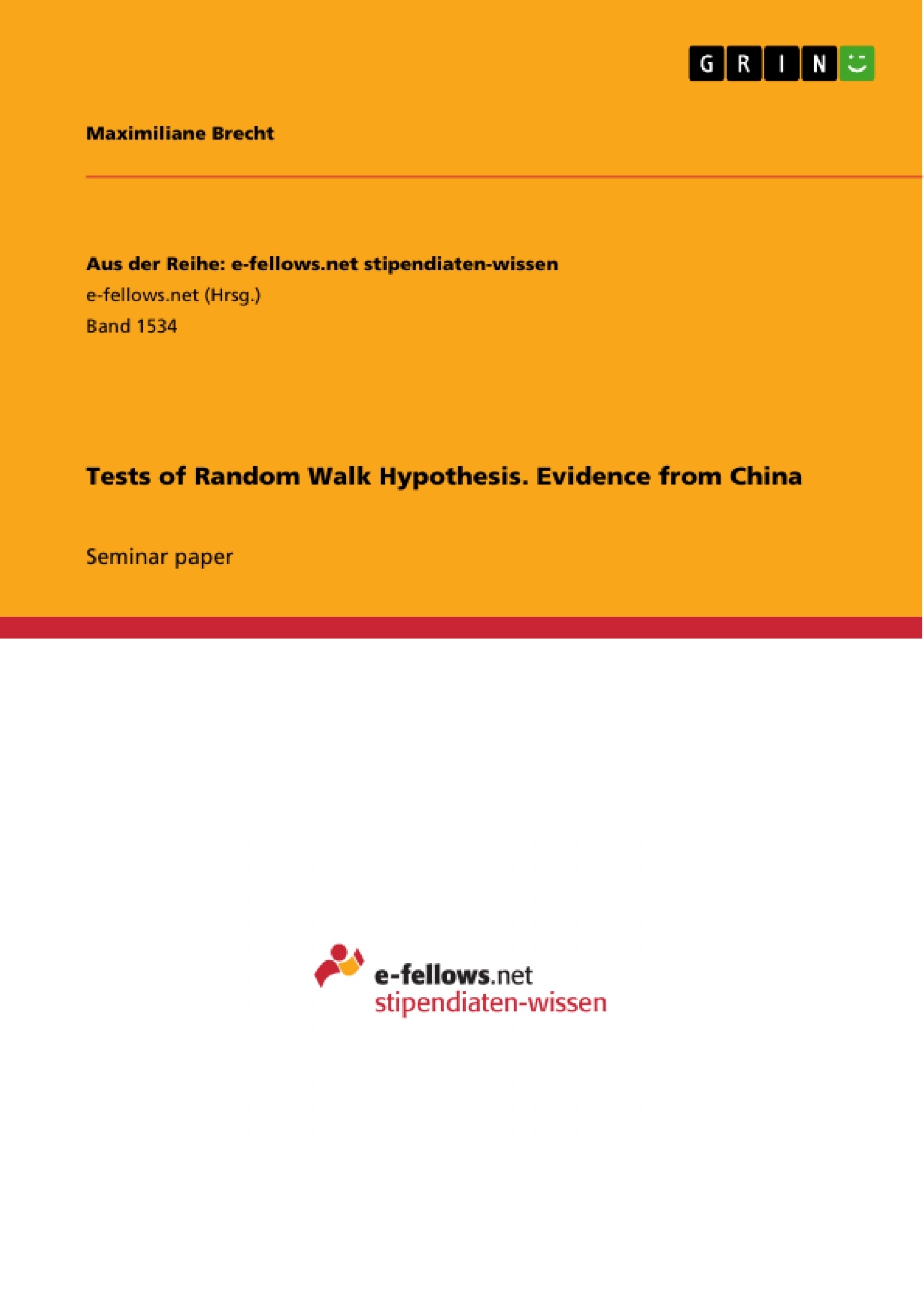Until the 1970s empirical studies generally supported the prediction following from weak-form efficiency: prices cannot be predicted using past prices, and returns are serially uncorrelated.
However inter alia Shiller, Fischer, and Friedman (1984) refuted the conclusion of economic insignificance in the case of negligible autocorrelations by modeling return processes with irrational bubbles where short-horizon returns are not significantly autocorrelated.
Empirically, studies such as Lo and MacKinlay (1988) reject the random walk hypothesis (RWH) for US stocks using the more powerful variance ratio (VR) test.
Similarly, RWH has also been tested for other markets with varying results.
This report aims to examine the Chinese stock market as it stands out insofar that it is segmented by investor type 3 that face identical conditions otherwise.
It also allows to observe consequences of loosening capital controls in terms of return-predictability.
Empirical evidence so far has produced mixed results: for instance Long, Payne, and Feng (1999) do not find significant autocorrelation using a 100-week sample.
On the other hand, Su and Fleisher (1999) reject the RWH when using daily data and for the market for foreign investors when using weekly data. Similarly, Darrat and Zhong (2000) find positive autocorrelation in the composite index using weekly data.
Using daily data until 2000, the RWH is rejected again only for the market for foreigners, but not for locals.
This work will build on empirical studies such as Long, Payne, and Feng (1999), concentrate on the VR test, and include observations following a policy reform in 2011 to test inter alia the hypothesis whether the market for foreigners became more efficient.
Inhaltsverzeichnis (Table of Contents)
- 1 Introduction.
- 2 Data and Methodology
- 3 Results
- 4 Conclusion.
- 5 References
Zielsetzung und Themenschwerpunkte (Objectives and Key Themes)
This report examines the Chinese stock market, specifically its segmentation by investor type, to investigate whether the market exhibits random walk behavior. The report focuses on testing the random walk hypothesis (RWH) using the variance ratio (VR) test and analyzing the impact of loosening capital controls on return predictability.
- Testing the RWH for the Chinese stock market using both weekly and monthly log-returns.
- Analyzing the impact of capital control reforms on return predictability.
- Comparing return predictability between A-shares (for locals) and B-shares (for foreign investors).
- Investigating the role of market liquidity in determining return predictability.
- Exploring the efficiency of the Chinese stock market for both local and foreign investors.
Zusammenfassung der Kapitel (Chapter Summaries)
- Chapter 1: Introduction: This chapter introduces the random walk hypothesis and its implications for market efficiency. It reviews previous studies on the RWH in the Chinese stock market, highlighting mixed results. The chapter outlines the objectives and methodology of the study, focusing on the VR test and analyzing the impact of capital control reforms on return predictability.
- Chapter 2: Data and Methodology: This chapter details the data sources and methodology used in the study. It describes the selection of weekly and monthly log-returns for A- and B-shares of the Shanghai stock exchange. The chapter also explains the rationale behind using weekly and monthly data instead of daily data, highlighting the potential for biases in daily sampling. It introduces the hypotheses to be tested, focusing on the predictability of B-shares compared to A-shares and the impact of capital control reforms on both types of shares.
- Chapter 3: Results: This chapter presents the results of the RWH tests using the VR test, CJ and Runs test, and Box-Pierce test. It analyzes the summary statistics for A- and B-returns, highlighting differences in volatility and mean-returns. The chapter examines the validity of the hypotheses, focusing on the predictability of B-shares compared to A-shares and the impact of capital control reforms on both types of shares.
Schlüsselwörter (Keywords)
Random walk hypothesis, variance ratio test, Chinese stock market, A-shares, B-shares, capital control reforms, market efficiency, return predictability, market liquidity, foreign investors, local investors.
- Citar trabajo
- Maximiliane Brecht (Autor), 2015, Tests of Random Walk Hypothesis. Evidence from China, Múnich, GRIN Verlag, https://www.grin.com/document/303724



